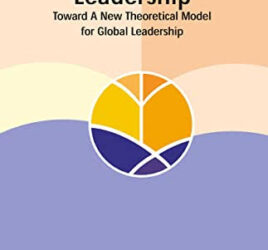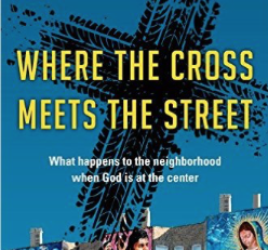 “International migration is rapidly changing the demographic distribution globally,” states Sadiri Joy Tira of the Global Diaspora Network (GDN). “Migrant pundits estimate that there are now over 200 million international migrants, and over 700 million internally displaced people or close to 1 billion scattered peoples.” The question is, “What practical response does the Church have in this human tidal wave scenario?”
“International migration is rapidly changing the demographic distribution globally,” states Sadiri Joy Tira of the Global Diaspora Network (GDN). “Migrant pundits estimate that there are now over 200 million international migrants, and over 700 million internally displaced people or close to 1 billion scattered peoples.” The question is, “What practical response does the Church have in this human tidal wave scenario?”
In his book, The Human Tidal Wave, Tira and various other contributors set out to continue the dialogue in response to the question raised at the Third Lausanne Congress for World Evangelization: “How can local congregations and missions agencies practically minister to and through the Scattered People?” Doug Birdsall, former Executive Chair of the Lausanne Movement, identifies the challenge. “With so many people on the move, the presents the responsibility for the church to reach out and care for the stranger in our midst … to show hospitality and build friendships with those who may be living in proximity to Christian communities for the first time.”
The United States is the largest recipient country of global migrants, with the majority coming from Mexico and Asia. Within Western Europe, there is a large number of internal migrants as well as large numbers coming from Africa, South Asia, Latin America and the USA. High-income Persian Gulf nations receive high numbers of migrant workers from low-income Asian, Middle-East and African nations.
In Vietnam, for example, 448,000 emigrants have permanently left the country between 2005 and 2010, with a majority going to the USA. Only 19,000 immigrants moved into Vietnam during this same period, according to the Wittgenstein Centre for Demography and Global Human Capital. Foreigners have a unique status in Vietnam as a small but influential minority. Unlike in Western or oil-rich Middle-Eastern nations, expatriates are not migrant laborers but educated middle- and upper-class experts.
This phenomena of the current global diaspora presents new opportunities for ministry, which can be divided into three approaches:
1) Congregations in receiving countries can minister to the diaspora by directly reaching out to migrants and expatriates. As a result they may have services in other languages.
2) Diaspora congregations (Korean, Filipino, International) minister through the diaspora by reaching out to others diaspora people.
3) When diaspora Christians acquire cross-cultural and language skills, ministry beyond the diaspora to the host nation can be established. Diaspora congregations are natural bridge-builders for ministry in host societies.
This mindset challenges us as “global nomads” to always be “living on mission in a transient world”. While we are abroad, we can naturally reach out to fellow expats and intentionally build bridges with the local community. When moving to another city across the globe, we continue our ministry through and beyond the diaspora there. If returning to our home country, we are aware that “the world is in our backyard” and be able to minister to the diaspora people there. God knows the next person you meet back home is the child of a high ranking official where you just came from!
For more details on GDN, visit www.globaldiaspora.org
By Jacob Bloemberg



